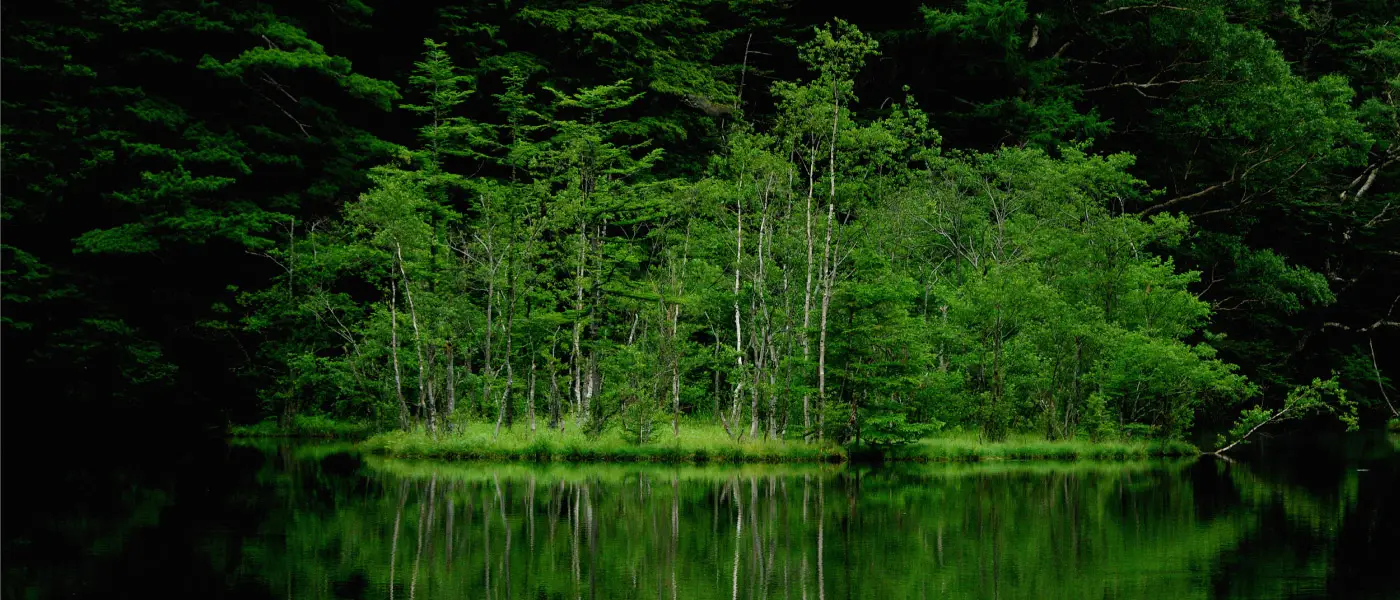Written by: William Habington
October 13, 2015
Kamikochi's event calendar serves as a handy guide to various important times of year in the park and surrounding areas. Appropriately, the period beginning around the time of the O-fune Matsuri (Boat Festival) and extending to the end of October is said to be the best time to take in the autumn leaves in the lead up to the end of the season. This annual event was held on schedule last Thrusday in the Myojin Pond area. A big thanks to the dedicated bloggers at the National park Guide website for posting these wonderful pictures of the festival proceedings.

To explain it in the simplest possible terms, the Boat Festival is a Shinto ritual observation held to extend thanks to the gods for ensuring travellers safe passage through the mountains. It's important to realise that, in Shinto cosmology, gods aren't simply ethereal beings up in the sky but part of the divinity that inheres in every part of nature. The central event of the festival is a ritual called 神事 (variously read as "shinji" or "kamigoto") performed by Shinto priests. The ritual itself displays some classically Japanese qualities most directly embodied by the quietly powerful and austere manner in which the rites are performed.

As any authority on Kamikochi will tell you, the famed Hotaka Oku-Miya is part of a larger group of shrines which includes the main Hotaka Shrine in Azumino City. The relationship between the two shrines, while many centuries old and shrouded in mystery, has been shaped by geography and, in particular, the influence of the Azumino River. In addition to being a central feature in Kamikochi's landscape, the Azumino also played an important role in the lives of early settlers in the Azumino Basin. The source of the river's running water in none other than melting snow from the peaks of Kamikochi's mountains, meaning that in a very real sense, water flows from the heart of Kamikochi like the very lifeblood of what was traditionally an agrarian community.

Since the waters of Azusa has irrigated the crops of the townships below since time immemorial, there the Azumino people naturally feel to nature in general and Kamikochi in particular. For this reason, a ceremony is held in two stages every November: the Omizu-tori followed by the Omizu-gaeshi ("drawing water" and "returning water," respectively). In the first ceremony, water is drawn from the spot where three rivers meet in Azumino. Then, in the second ceremony, the water is taken back to its source in Kamikochi and poured into the deepest section of Myojin Pond.
This year's Boat Festival kicked off at around 11am with a large group of spectators having gathered beforehand to get a good view. Frist time attendees liekly would have been struck by the costumes which are evocative of Japan's Heian Period, which lasted about 400 years from 794 to around the end of the twelfth century.
Having successfully deposited the water into the lake, the crew of the boat had an axious moment when a gust of wind threatened to capsize them. Some quick thinking by the man at the rudder ensured they returned safely, however.

The Hotaka Shrine's special status as the place that houses the gods watching over the Japan Alps makes it an ideal place to hold an event which gives thanks for mountain safety. By the same token, it's a very appropriate event for hikers and climbers. At risk of stating the obvious, however, any climber worth his or her salt knows that it's necessary for all of us to be mindful of our own safety at all times. So if you are heading up to the mountains this season, prepare accordingly, be aware of your surroundings, and don't take any unnecessary risks.
That's all for now, btu please stay tuned to Sacred Highland Kamikochi for regular updates on the ongoing autumn season.
Source of Information:
National park Guide website: http://npg-alps.net/




